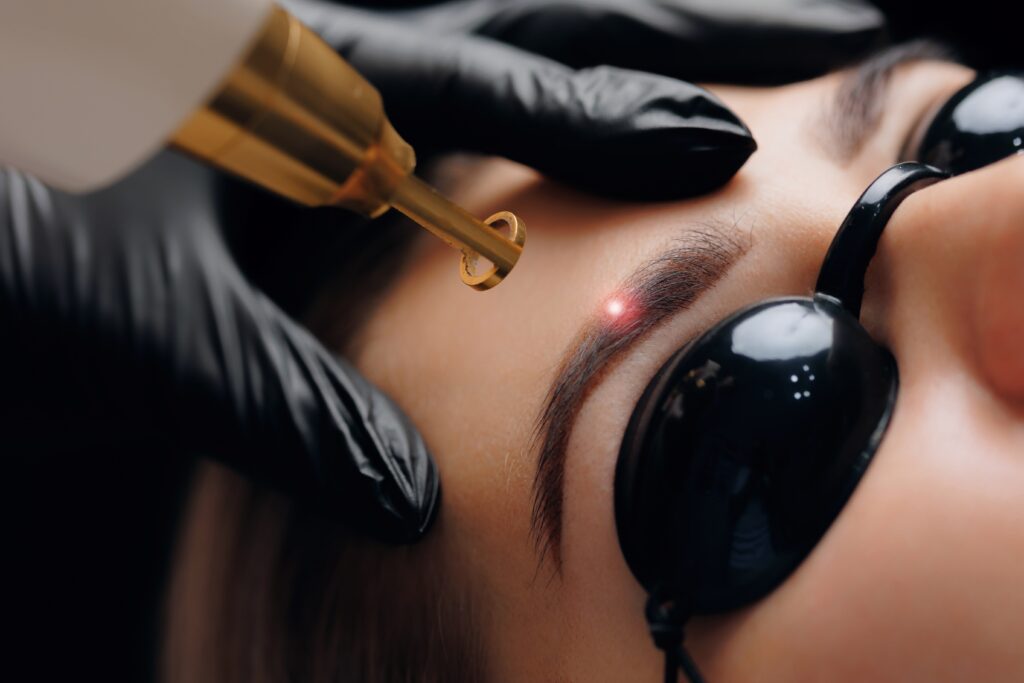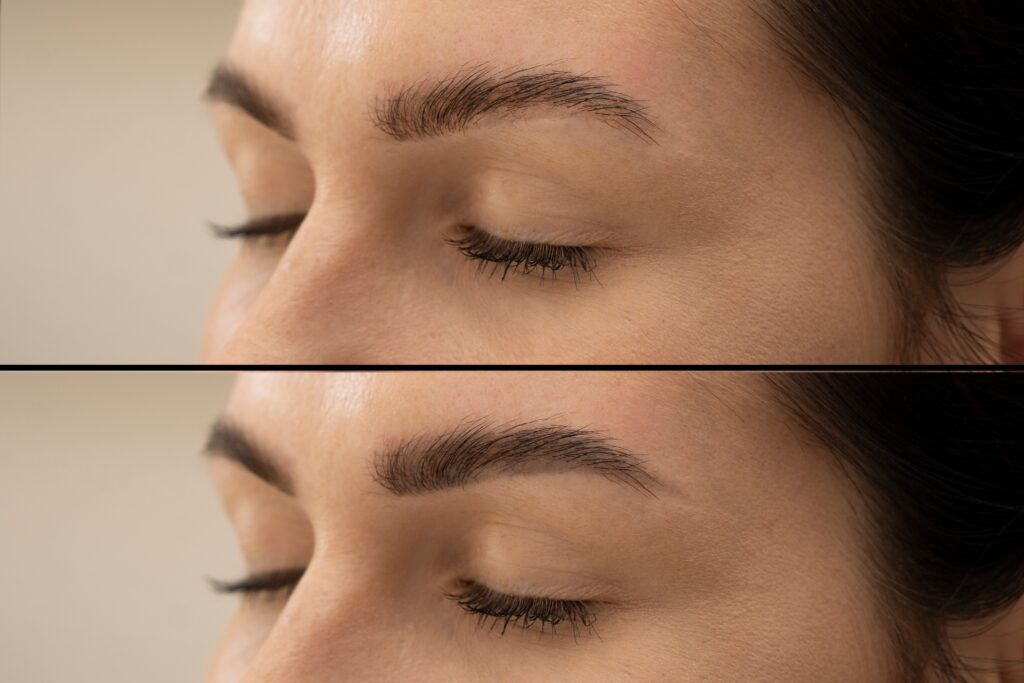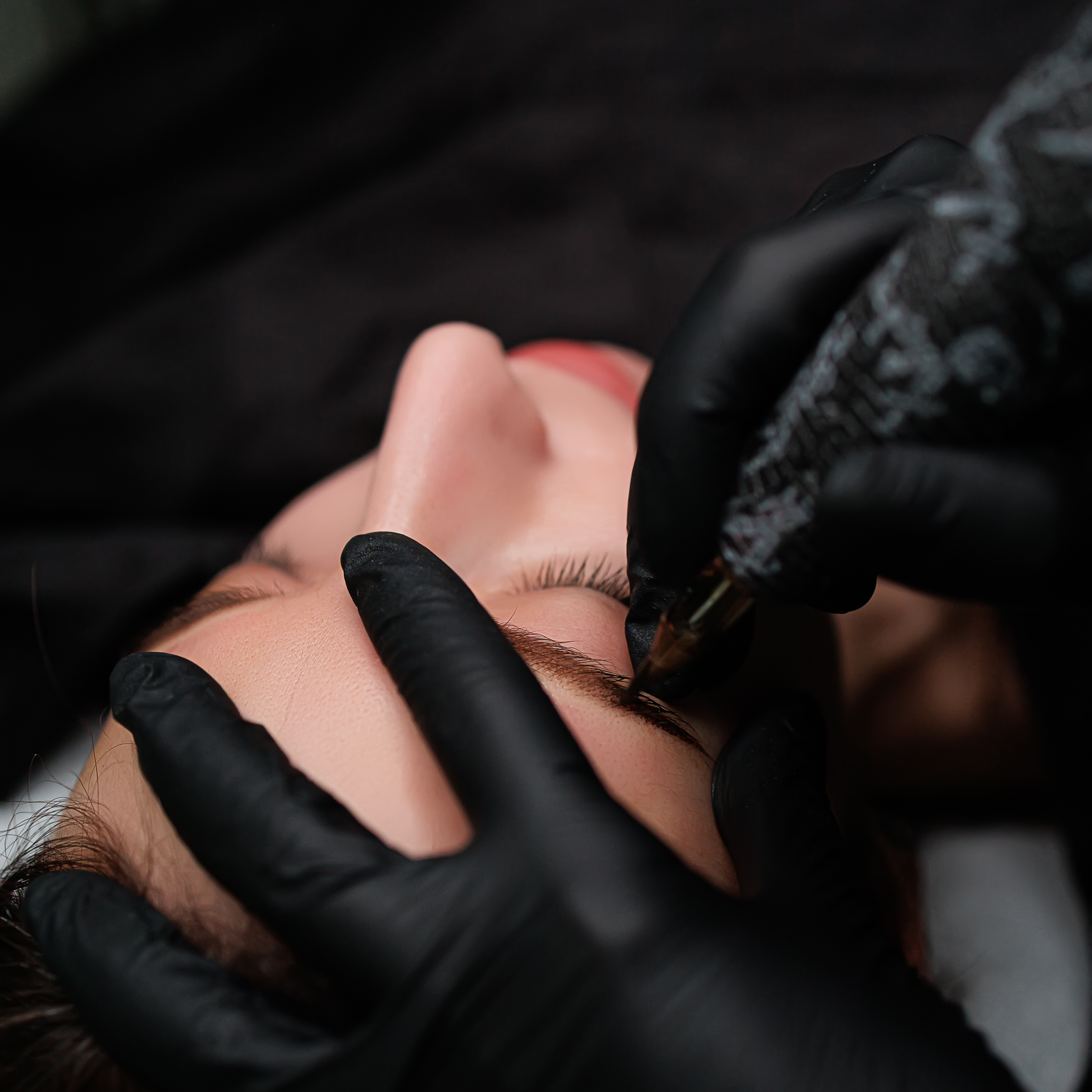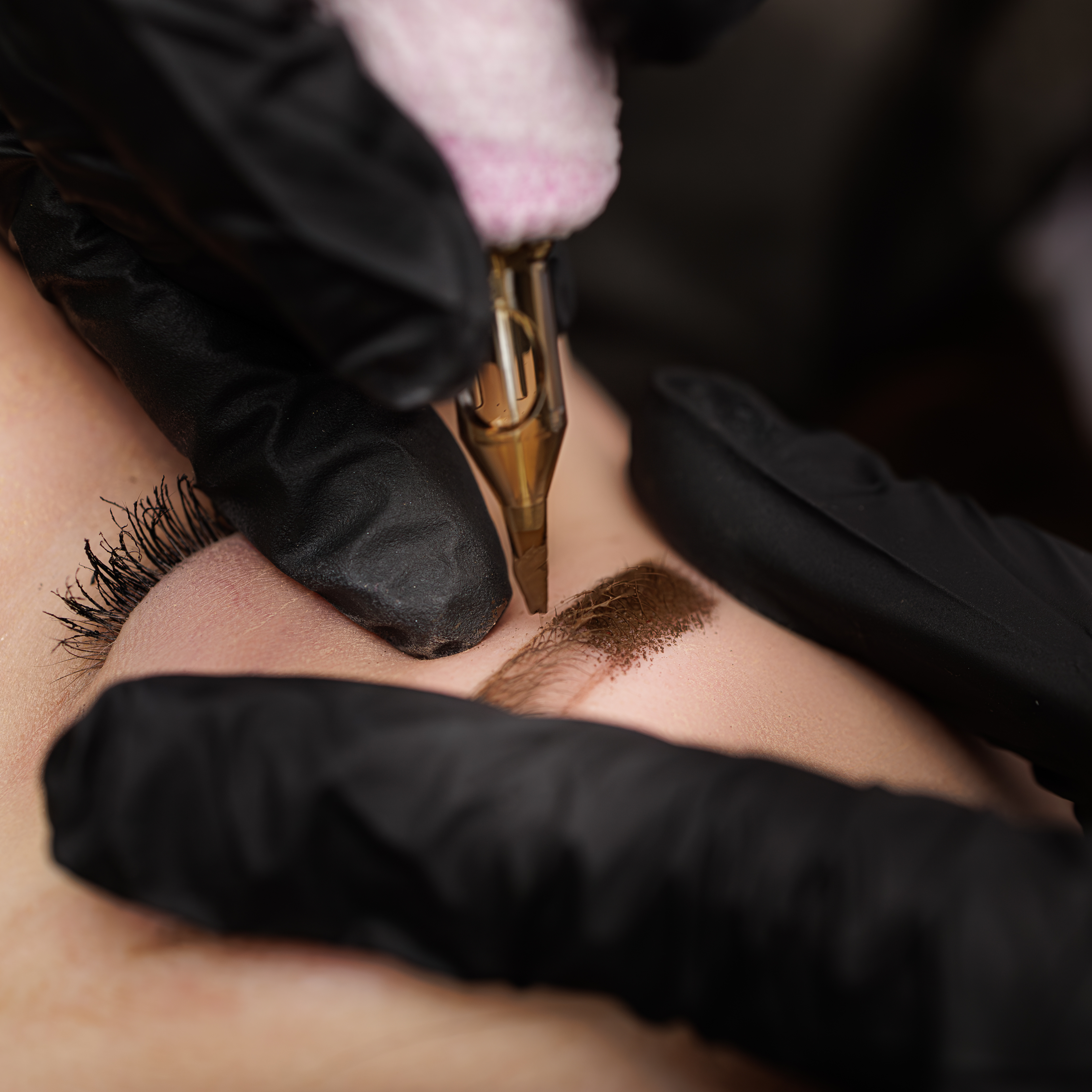Permanent makeup (PMU) is a long-term beauty solution, but sometimes clients seek removal due to fading, color shifts, or dissatisfaction with the results. Two of the most common methods for PMU removal are laser removal and saline removal. Each has unique benefits and limitations, depending on skin type, pigment color, and treatment goals.
In this guide, we’ll compare laser vs. saline removal, discuss different laser types, and explain why choosing a skilled professional is crucial.

How Does Laser PMU Removal Work?
Laser removal uses targeted light energy to break down pigment particles in the skin. The body then eliminates these fragmented pigments naturally.
✅ Best for: Removing darker pigments like black, brown, or deep red.
❌ Not ideal for: Light or white pigments, which may turn darker when exposed to laser.
Types of Lasers Used for PMU Removal
There are different laser technologies used for removing permanent makeup. The most common are Q-switched Nd:YAG lasers and Pico lasers.
Q-Switched Nd:YAG Laser
- Works by delivering high-intensity pulses of energy to shatter pigment.
- Most effective on darker pigments like black and brown.
- May require multiple sessions for full removal.
Pico Laser (Picosecond Laser)
- Delivers ultra-fast pulses to break down pigment into finer particles, allowing for faster removal.
- Less heat is generated, reducing the risk of scarring and skin damage.
- More effective on stubborn pigments, including reds and lighter colors.
Which is better?
Pico lasers tend to be faster and safer, especially for sensitive areas like eyebrows, but Nd:YAG lasers remain widely used and effective for PMU removal.
Pros of Laser Removal
- Fast and effective for deep pigment removal
- Works well on most skin types
- Fewer sessions needed for darker pigments
Cons of Laser Removal
- May not be effective on red, white, or titanium-based pigments
- Can cause temporary lightening or darkening of the skin
- Higher risk of scarring for darker skin tones
How Does Saline PMU Removal Work?
Saline removal involves tattooing a specialized saline solution into the skin to lift pigment naturally. The solution breaks down pigment particles, which are then pushed out through the skin’s natural healing process.
✅ Best for: Lighter pigments, color corrections, and gentle removal.
❌ Not ideal for: Very deep pigments or large tattoo areas.
Pros of Saline Removal
- Works on all pigment colors, including white and red
- Safer for all skin types, including darker tones
- Less risk of scarring compared to laser
Cons of Saline Removal
- Requires multiple sessions for full removal
- Slower healing process
- Not as effective for deep or heavily saturated PMU
- Potential for hyperpigmentation or hypopigmentation
- May reactivate scar tissue formation, thus hindering future PMU results

The Importance of Choosing a Trained Professional
PMU removal—whether by laser or saline—is a delicate process that requires expert knowledge of skin types, pigment composition, and proper technique.
- Untrained laser technicians may use the wrong wavelength, leading to pigment oxidation (brows turning gray, white, or even darker).
- Poor saline removal technique can cause excessive scabbing, leading to uneven fading or scar tissue.
- A skilled professional will assess your brows, choose the right removal method, and minimize risks of skin damage.
💡 Tip: Always check your technician’s credentials, ask about their experience with PMU removal, and ensure they use high-quality equipment. Also, In New Jersey, laser tattoo removal is regulated as a medical procedure; most often performed by dermatologist.
Which PMU Removal Method is Right for You?
Your choice between laser vs. saline removal depends on several factors:
- Pigment Color: Laser is ideal for dark pigments, while saline works best for lighter or stubborn colors.
- Skin Type: Saline is safer for darker skin tones to avoid hyperpigmentation.
- Healing Time: Laser is faster, but saline offers a more gradual, natural fade.
If you’re unsure, consulting with an experienced PMU removal specialist can help you decide the best course of action for your unique case.
Final Thoughts
Both laser and saline removal are effective options for correcting or removing PMU. If you need PMU removal, it’s essential to choose an expert who understands skin tone, pigment composition, and the safest removal techniques. Be sure to consult with a trained PMU artist who can make a recommendation based on your current brows.
Need to Correct or Remove Your PMU?
Don’t let unwanted pigment hold you back! Book a consultation today, and let’s discuss the best options for you.



